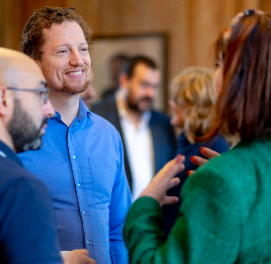In this series TPC Leadership wants to lend a helping hand to Professional Service organisations and dive into discussions surrounding virtual teams. In this next blog of the series, Catherine Bardwell, TPC Leadership CRM Partner, uses four pillars to explain the main challenges facing high-performance virtual teams:
Catering for different personality profiles
While extroverts may be suited to speaking up in the virtual environment, introverts will need more encouragement and scaffolding to share their full potential. Some personalities suffer from the lack of routine and discipline that can manifest in remote working, while others might struggle to demonstrate sufficient digital literacy to engage effectively.
Technology
It’s important to be open to new ideas in terms of digital technology. “Don’t shy away from using different tools,” says Catherine. “Leaders and teams need to understand how to utilise technology such as Zoom and WhatsApp at an operational level, but also consider how that technology can be used to help virtual teams to bond.”
Performance
It can be more difficult to get a handle on performance development when managing teams virtually. Team leaders need to focus on their team’s experiential learning but also their skills and training.
Building trust and intimacy
Long-distance relationships don’t always work, says Catherine, and virtual teams can suffer a similar fate. It is the job of the team leader to find ways to maintain trust and intimacy by allowing people to speak up and express themselves freely and safely in a virtual setting.
Andrea Cardillo, TPC Leadership Managing Partner, suggests a strategy known as the CLOCKS model as a way for teams to observe and fine tune the way they work. “It can be particularly useful at board level where conversations are often content heavy — with a focus on strategy and operations — while in fact more time needs to be given to reflecting on the function, relationships, culture and dynamics of the team itself.”
The CLOCKS model
CLOCKS is an acronym for six dimensions and processes needed for a team to be successful.
C — Common goals and vision. “Ensure the team has clarity and alignment regarding what they’re doing and why,” says Andrea. “Make a clear distinction between the big picture — the organisational vision — and the team’s vision and purpose.”
L — Leadership. This isn’t only about having the right leaders but deciding on the best leadership style to drive progress in your team.
O — Organisation and governance. “Ensure clarity and a thorough understanding of how the decision-making process is structured,” says Andrea. “Governance must be appropriately leveraged and business models suitably agile.”
C — Communication routines. Some communication routines are technical, for example deciding on the best technology to facilitate meetings and operational communications. But Andrea explains, “It’s also essential to explore how we communicate to foster positive relationships and dynamics within the team — how we communicate to maintain a level of trust and intimacy, and how we handle conflict.”
K — Knowledge. Develop a thorough assessment of knowledge, skills and competencies needed to achieve the team’s goals.
S — Stakeholders Management Strategy. There can be a tendency to delegate upwards. But Andrea emphasises the importance of sharing a common responsibility and “navigating relationships together as a single entity, in a way which is aligned.”

Top tips to synchronise CLOCKS
Using a framework like CLOCKS keeps things simple. Reflect on each of the dimensions, then share and discuss them openly with your team. Andrea suggests using a 20/80 approach. Identify one area you could improve by 20% that will give you an 80% improvement in results. Prepare an action plan, work through it, and review it. Then address your next priority following the same process.
Your weekly challenge
- Use the CLOCKS Model as a framework to observe your team.
- Share your observations with your team.
- Create an action plan to address any issues identified from your observations.
Looking to build high-performance virtual teams in your organisation? Get in touch with us to find out how we can help.





